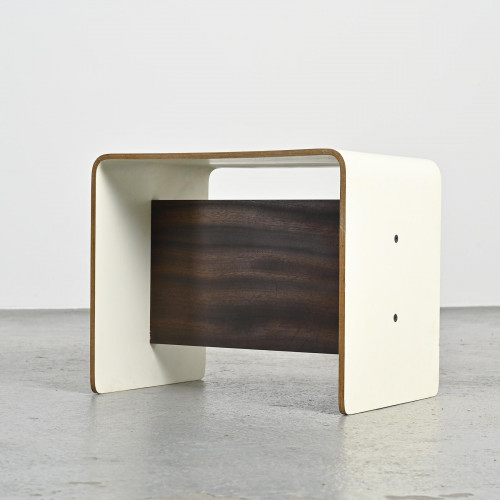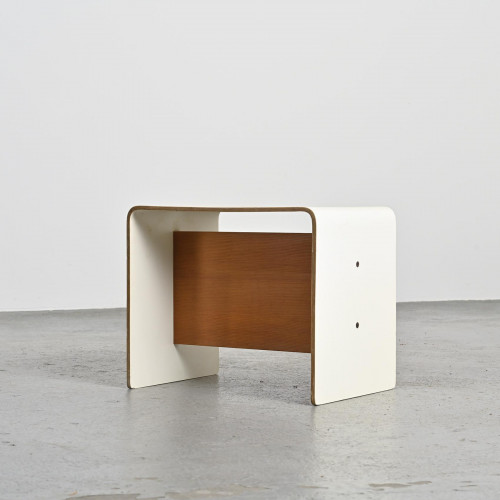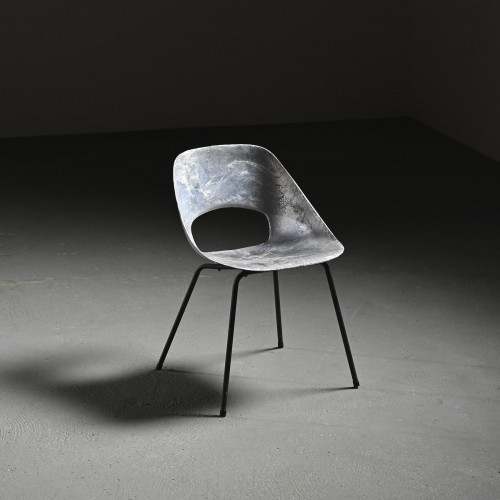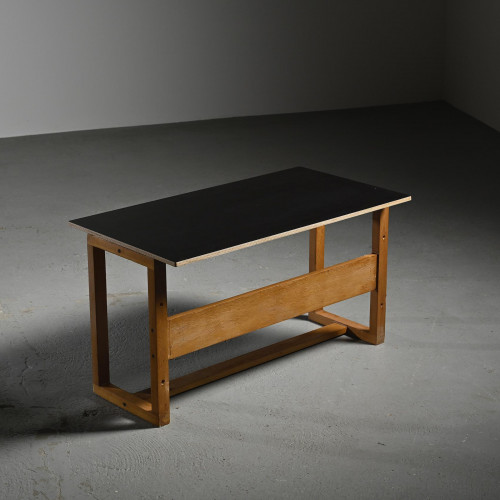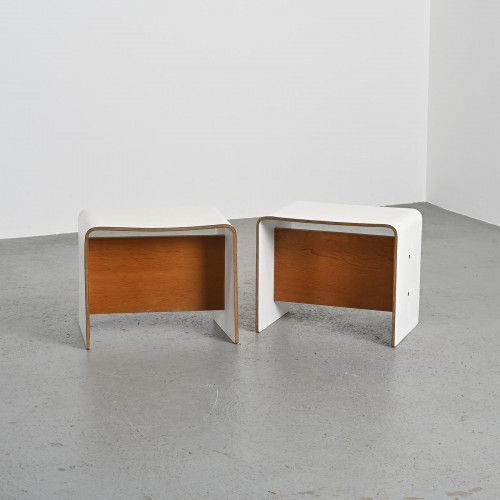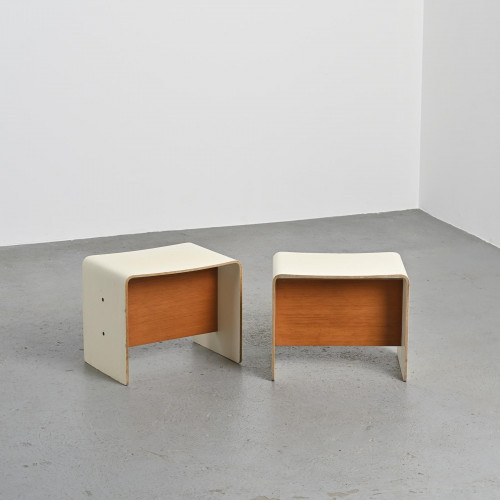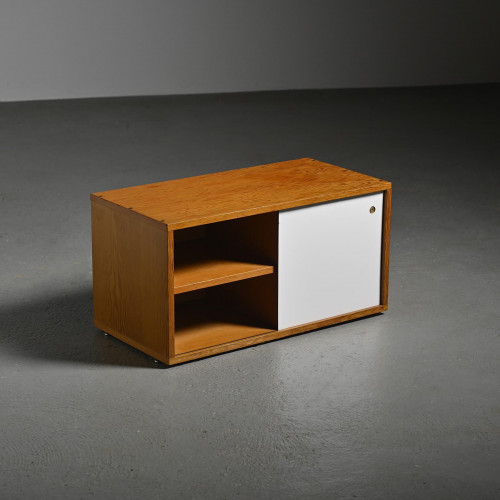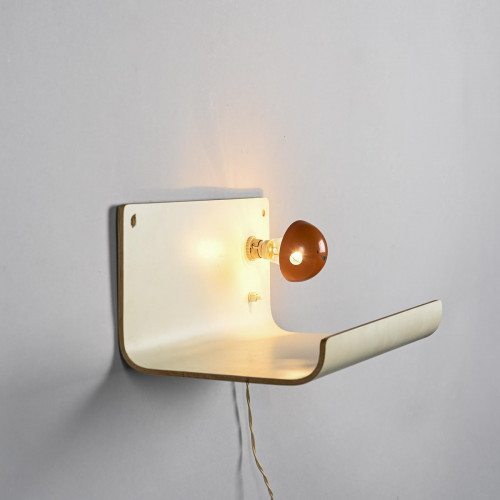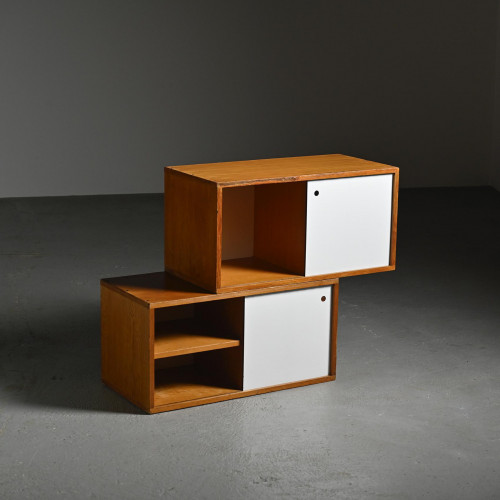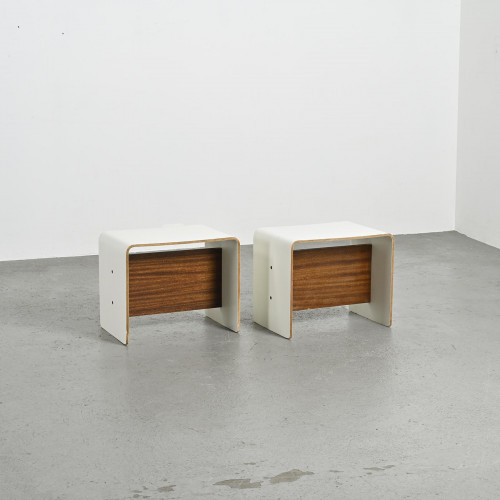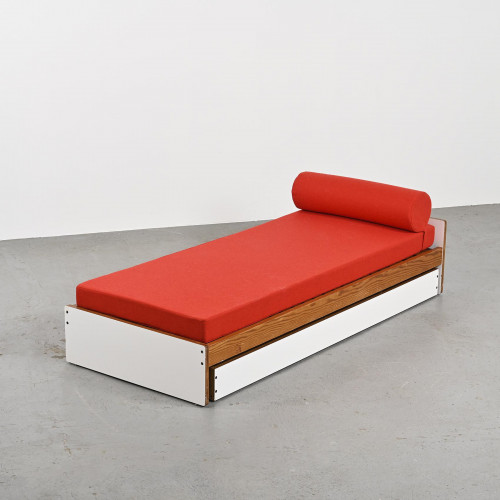Pierre Guariche (1926 - 1995)
Pierre Guariche, born on November 27, 1926 in Bois-Colombes, France, is one of the iconic figures of 20th-century French design. His prolific career and enduring influence in the realms of interior and furniture design have made him a true icon of modern design.
He pursued his design education at the École nationale supérieure des arts décoratifs in Paris, which he joined after World War II. It was there that he discovered his passion for design, influenced by modernist movements and the Bauhaus philosophy, alongside his schoolmates such as Alain Richard, André Simard, André Monpoix, Michel Mortier, and Joseph André Motte.
During the 1950s and 1960s, Pierre Guariche emerged as a key figure in post-war French reconstruction design. He became known for his minimalist furniture creations, emphasizing simplicity, functionality, and the use of innovative materials. His chairs, lamps, and tables became iconic representatives of the aesthetics of modern design during that era. Guariche collaborated with renowned manufacturers such as Meurop, Steiner, and Disderot to produce his designs. Among his most famous creations are the "Tonneau" chair and the "Sesame" lamp.
However, Guariche's work extended beyond furniture design. He believed that interior design was just as crucial in creating harmonious and functional spaces. He contributed to the design of interiors for apartments, hotels, and public spaces, applying his vision of modern design to various environments.
The project to create La Plagne, a ski resort located in the French Alps, began in 1961. This major tourism development project in the region involved several renowned designers and architects,
Pierre Guariche, born on November 27, 1926 in Bois-Colombes, France, is one of the iconic figures of 20th-century French design. His prolific career and enduring influence in the realms of interior and furniture design have made him a true icon of modern design.
He pursued his design education at the École nationale supérieure des arts décoratifs in Paris, which he joined after World War II. It was there that he discovered his passion for design, influenced by modernist movements and the Bauhaus philosophy, alongside his schoolmates such as Alain Richard, André Simard, André Monpoix, Michel Mortier, and Joseph André Motte.
During the 1950s and 1960s, Pierre Guariche emerged as a key figure in post-war French reconstruction design. He became known for his minimalist furniture creations, emphasizing simplicity, functionality, and the use of innovative materials. His chairs, lamps, and tables became iconic representatives of the aesthetics of modern design during that era. Guariche collaborated with renowned manufacturers such as Meurop, Steiner, and Disderot to produce his designs. Among his most famous creations are the "Tonneau" chair and the "Sesame" lamp.
However, Guariche's work extended beyond furniture design. He believed that interior design was just as crucial in creating harmonious and functional spaces. He contributed to the design of interiors for apartments, hotels, and public spaces, applying his vision of modern design to various environments.
The project to create La Plagne, a ski resort located in the French Alps, began in 1961. This major tourism development project in the region involved several renowned designers and architects,
including Pierre Guariche, who collaborated on it for nearly 15 years.
Guariche played a crucial role in the architectural and design concept of the resort. He created interior spaces that were both warm and practical, catering to the specific needs of a ski resort. In addition to interior design, Pierre Guariche designed plans for certain cable cars and created specific furniture for the apartments and buildings at La Plagne. His standardized pieces were both elegant and functional, modular, and combinable, becoming an integral part of the ski resort experience.


